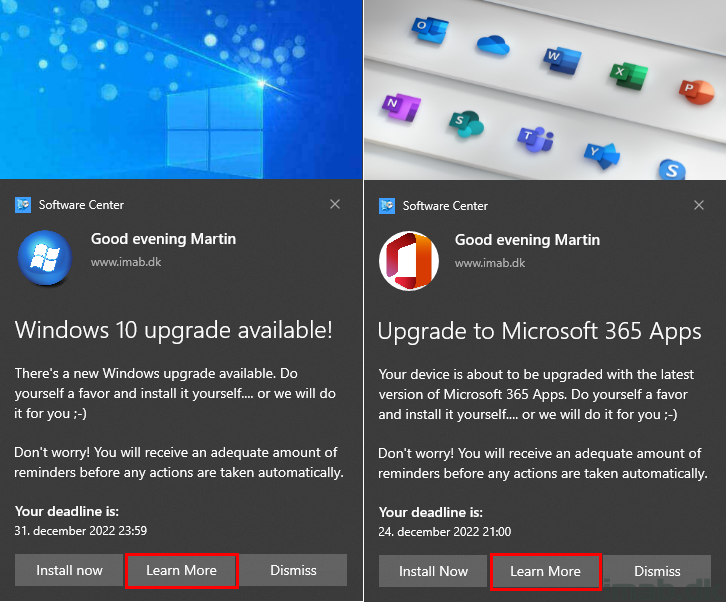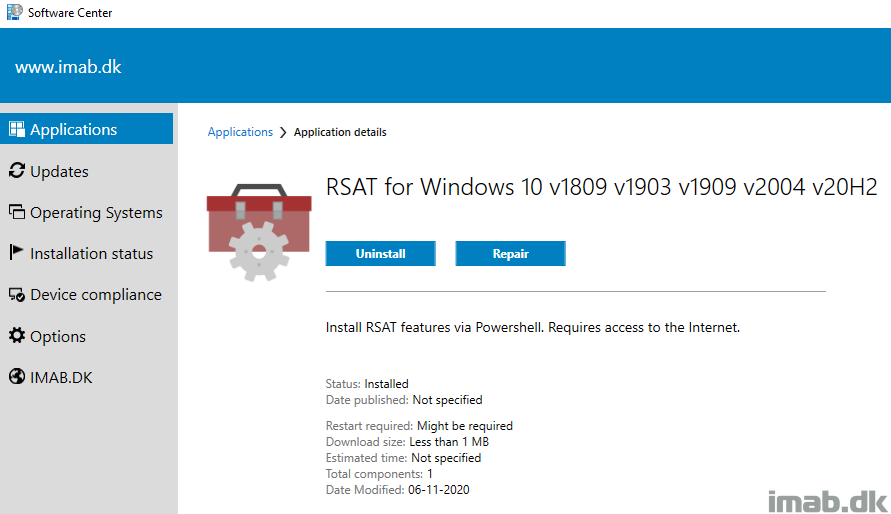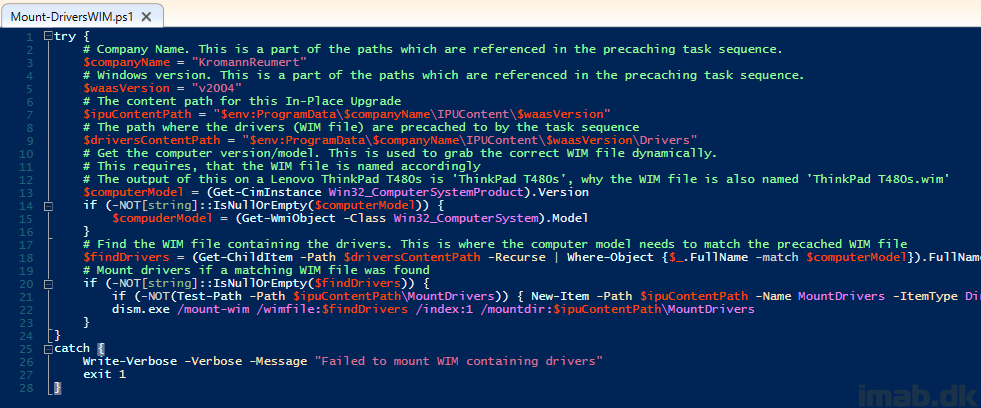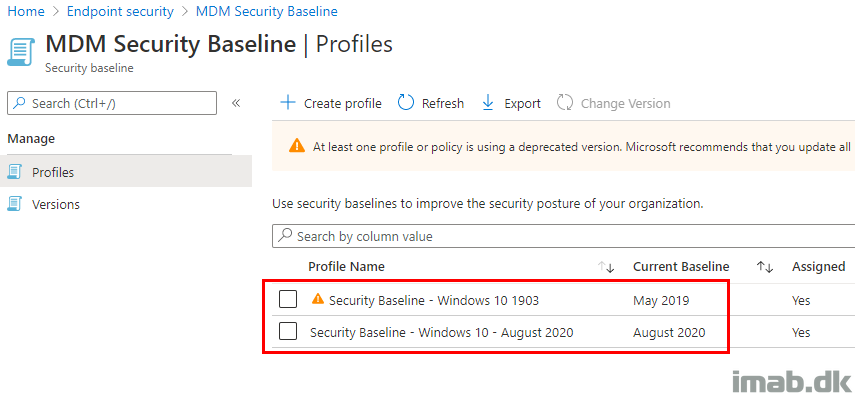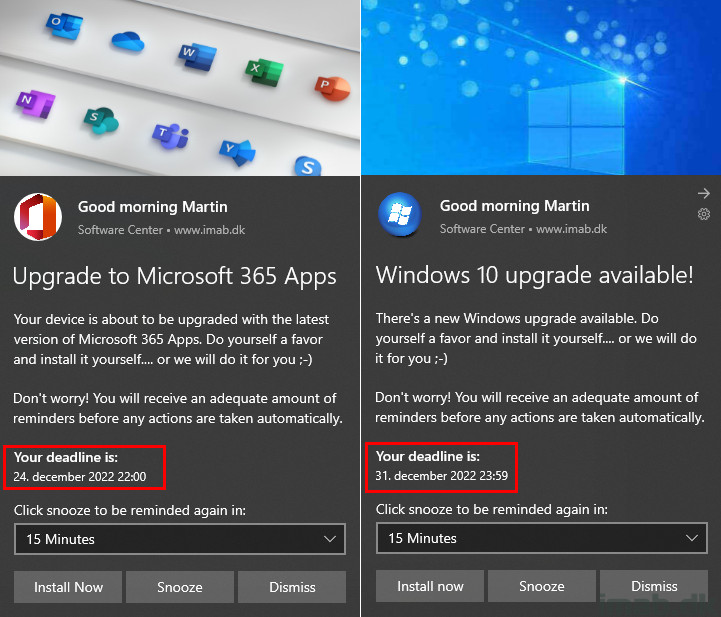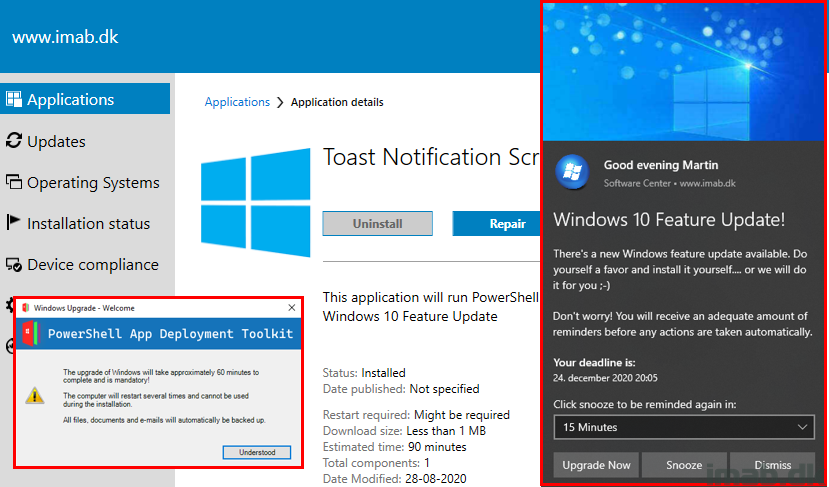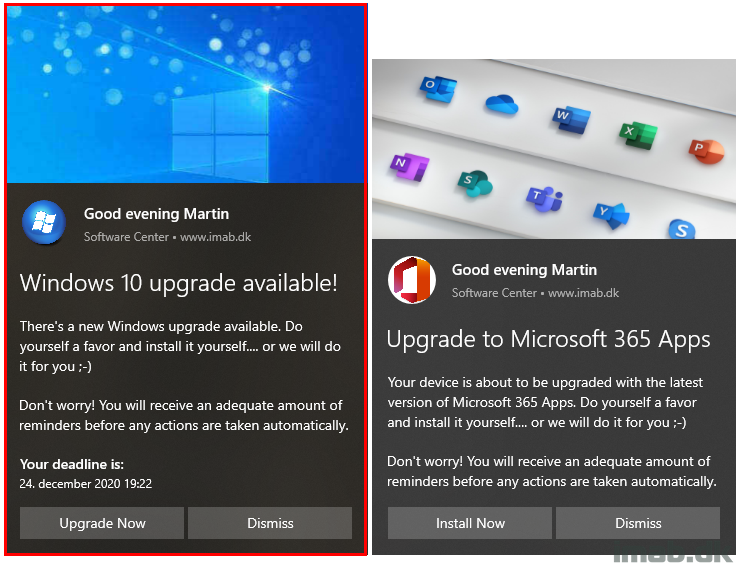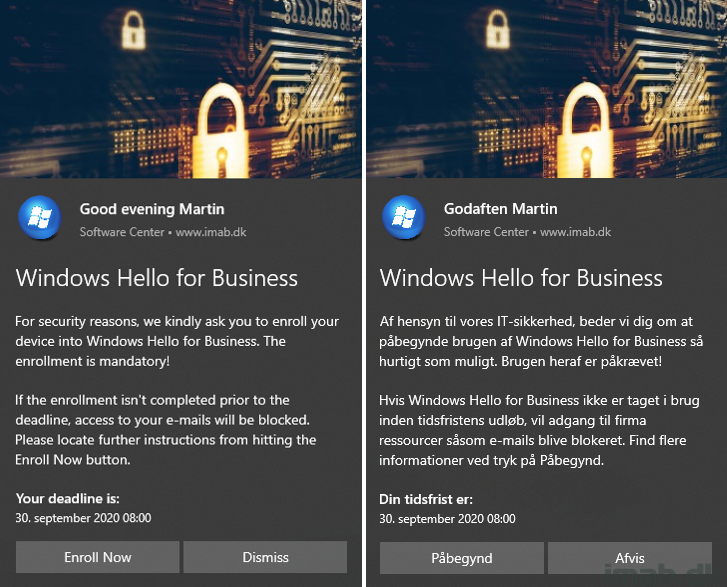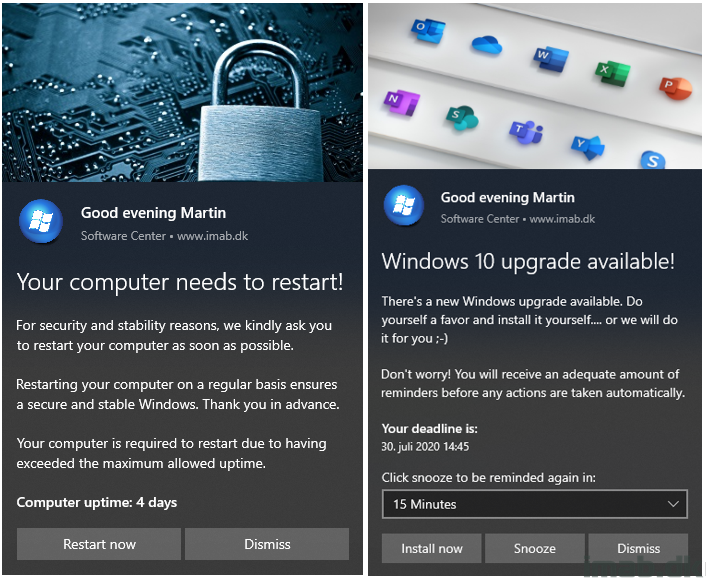Introduction
A new version of the Windows 10 Toast Notification Script is here. The script is now being on version 2.1.0.
This version brings the option to add a second action button to the toast notification (displayed in the illustration below), as well as a built-in functionality to prevent users from disabling toast notifications in Windows 10 altogether.
A second action button is useful in many scenarios. One being with a Windows 10 upgrade, where you, besides the actual upgrade, also have some additional information for the user. In this example, Install Now will launch the actual upgrade, while Learn More will open a specific web page in the browser.
Prevention from disabling toast notifications is stolen with pride from Trevor Jones, and is incorporated into my script. More details down below. 🙂
